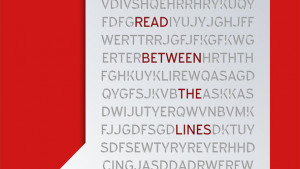- UpperEdge
- Reading Time: 3 minutes

With SAP’s very public arbitration against AB-InBev followed by Indirect Access taking center stage during Bill McDermott’s opening keynote address at SAPPHIRE, it was a very natural progression for SAP to release a white paper on its “modernization” of the on-premise licensing policy (also known as Indirect Access) this month. While the predictability SAP provided is helping subdue the nerves of some companies, our experience with SAP has led us to recognize that we may not be receiving the fullest transparency. As such, we thought it would be appropriate to dive deeper into what SAP’s Indirect Access White Paper did and didn’t say.
Justifications for License Policy “Modernization”
When customers have opposed SAP’s contractual ability to pursue Indirect Access in the past, SAP has pointed them to their SAP agreement where “Use” is defined broadly enough to cover both traditional and Indirect Access scenarios. Here, SAP is taking potential opposition head-on and pointing SAP customers to its current definition of “Use” as the contractual justification for modernizing their licensing policy.
SAP’s business justification for modernizing their licensing policy is that the technology landscape has changed over the years and so has the way customers use SAP software. With that being said, we know we are at just the “first step in the longer journey” of modernizing the licensing policy. This means that additional Indirect Access scenarios will be positioned by SAP above and beyond the most common ones identified by SAP in its white paper and will likely include the less common indirect access scenarios experienced by many of our clients today.
Most Common Indirect Access Scenarios
Based on our experience assessing Indirect Access risk and exposure for our clients, SAP has in-fact provided transparency into the most common Indirect Access scenarios:
-
Order to Cash & Procure to Pay
SAP customers who have exposure related to Order to Cash and Procure to Pay scenarios will find SAP’s white paper policy of leveraging orders for resolving Indirect Access in lieu of Named User types more favorable (if pricing is unchanged).A notable distinction is made when SAP approaches S/4HANA customers versus ECC customers. S/4HANA customers will be able to resolve employee exposure with orders, while ECC customers will be required to resolve employee exposure with Named User licenses. This clearly plays into SAP’s overall strategy to push current ECC customers to S/4HANA, where SAP will provide more favorable Indirect Access resolutions for customers who make the move.
-
Indirect Static Read
SAP provided transparency into its Indirect Static Read policy, where it detailed the requirements for a scenario to be considered Indirect Static Read (or not Indirect Access). Information exported from an SAP system to a non-SAP system pursuant to a predefined query that (a) was created by an individual licensed to use the SAP system for which information is being exported (b) runs automatically on a scheduled basis, and (c) use of the information by non-SAP systems and/or their users does not result in any updates to and/or trigger processing capabilities of the SAP system. However, what SAP omitted is that this policy is not new. In addition, SAP has never charged for Indirect Static Read meeting these requirements in the past.
For those SAP customers who previously licensed Named Users to address what is now clearly defined as Indirect Static Read, SAP has provided its extension policies as an option to right-size your previous investments. However, SAP has conveniently omitted that its extension policies will not allow you to recoup licensing fees and support associated with expensive Named User types, but simply acts as a termination resulting in lost value.
Less Common Indirect Access Scenarios
Leveraging the white paper alone may provide you with a false sense of security when it comes to Indirect Access. SAP has in-fact omitted that other less common scenarios with meaningful risk and exposure do exist across several of their customers we have engaged. In addition, SAP did not provide any guidance on Indirect Access relative to its customers evolving use of the software. Any analysis you do leveraging the white paper alone will lead to a misinformed view of your risk and associated exposure.
From our point of view, SAP’s recent Indirect Access PR campaign is primarily focused on easing the anxiety of the customer base so customers will be more open to engaging in open Indirect Access conversations with SAP sales representatives. We strongly recommend caution here and advise SAP customers to seek our advice in order to proactively understand their range of exposure and develop a well-crafted and staged approach for engaging SAP. If you would like to learn more about how UpperEdge has helped companies mitigate Indirect Access exposure and optimize their SAP relationships, contact us here.
Comment below and follow UpperEdge on Twitter and LinkedIn
Related Posts
- The Underlying Implications of SAP’s New Indirect Access Order Licensing Policy
- Defeating the SAP Project Optimism Death Star
- Software Audits Continue to Rise: Understand the Software Vendor’s Audit Playbook
- Will SAP Competitors Fight the Indirect Access Madness?
- Key Initial Steps for Successfully Reacting to SAP Audit Notifications